I believe in change, transformation and transition. So, in my opinion, the process of an artist has to go with the artist’s personal changes along the years. It is absolutely natural that change takes place in a body of work, in the evolution of a person and ideas.
Painter Marina Roca recalls a serendipitous moment in a bookshop in Berlin during her formative years, when it dawned on her that what you want to explore personally cannot be found in a book.
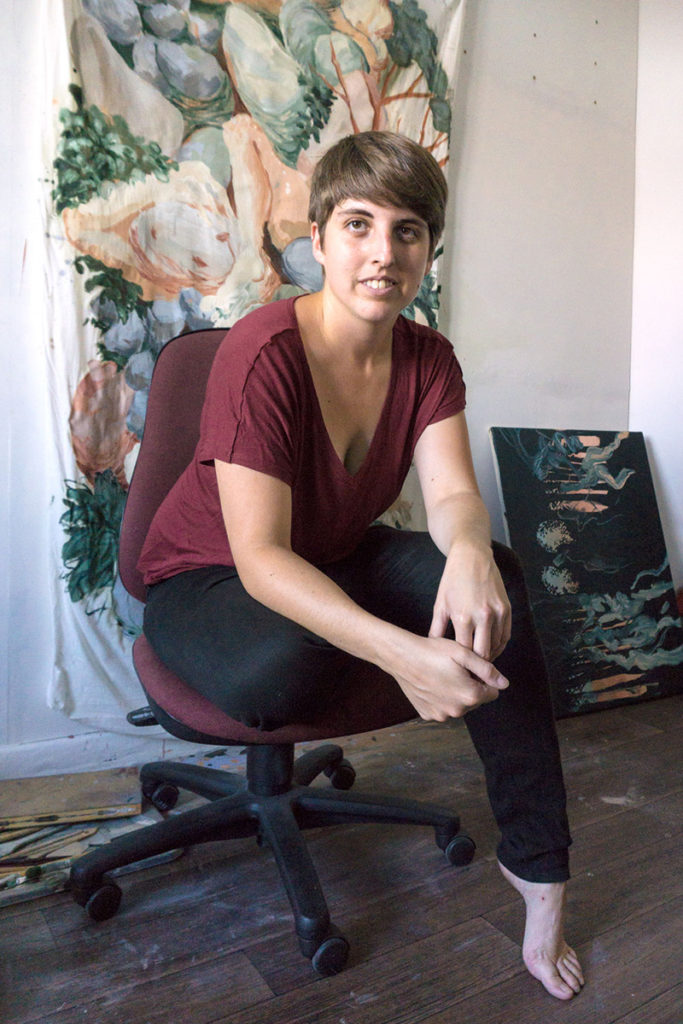
How did your journey in the world of art begin?
I have been in contact with the arts since I was a kid because my father is a landscapist, illustrator and drawing teacher. We used to go on vacations every summer to Menorca, one of the beautiful Balearic Islands in the Mediterranean Sea, where my father would do sketches for his landscapes. He always had a piece of paper and a box of watercolours ready for me. He would talk to me about light and colour. So, art is something natural for me. It’s always been a part of my daily life and I practice it every day, as if it were a prayer or a meditation.
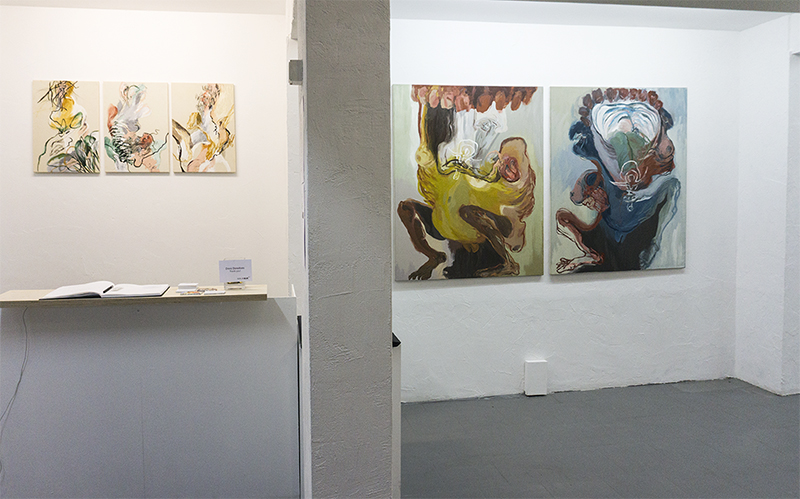
Exhibition view
Tell us about the evolution of your practice.
I feel I’ve evolved a lot, both my ideas and my way of painting. In the beginning, I was more focused on shape and drawing, with colour as a secondary position. Now, I’m turning to colour and discovering a huge range of possibilities. I like to give some intention to the colour palette, so it is not only a support to shape, as it was for me in the past. It tells a big part of the story. Besides this, I have incorporated many different ways of dealing with the image in the process, and that shows in the result of a painting. I believe in change, transformation and transition. So in my opinion, the process of an artist has to go with the artist’s personal changes along the years. It is absolutely natural that change takes place in a body of work, in the evolution of a person and ideas. I used to be more focused on trying to explain, or illustrate certain ideas. Now, I focus more on what the surface of the painting brings me, without being verbally explanatory. This approach talks directly about the visual poetry of a painting.
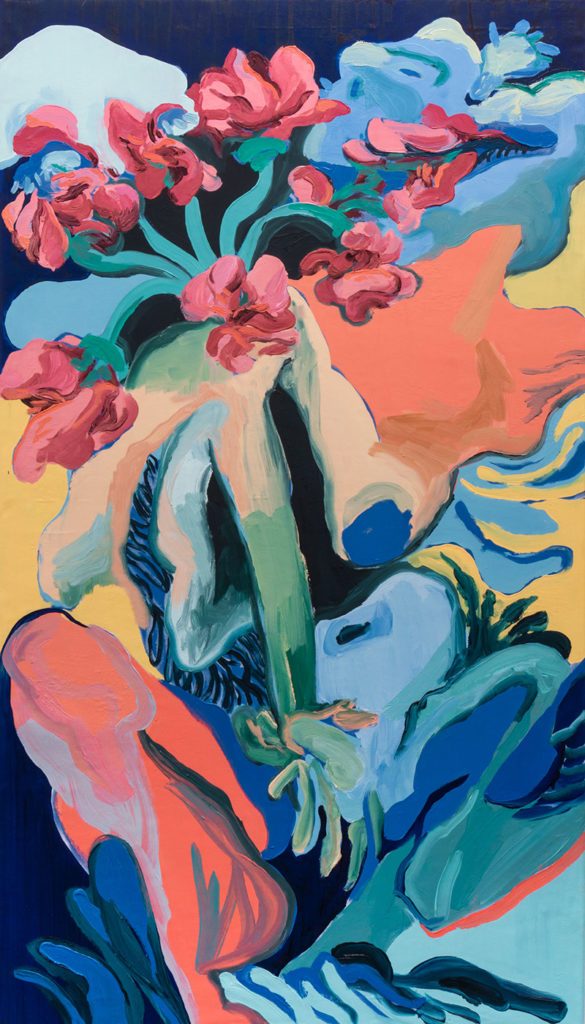
Is this love or summer IV
What were your biggest lessons and obstacles along the way? Which is the most memorable moment?
When I arrived in Berlin I was overwhelmed by the huge amount of new visual input, new experiences and new beginnings. My work was a bit confused, not knowing what I was exactly pursuing with my paintings. I got to a point where I was searching all the time, trying to find the way I should express myself, by looking at other artists. One day I was in a bookshop and looking for new artists I didn’t know about, a frenetic and obsessive search. Then I had this moment of enlightenment: you won’t find in a book what you personally want to explore. You need to explore it yourself. No matter how many things you learn in art schools and universities, nobody will tell you how you express yourself. You have to go through the process yourself. Since then I have this as a moto: I do the paintings I would like to see as a viewer, the images that don’t exist yet, but I wish they existed. Sometimes, I succeed in bringing them into existence, sometimes I don’t, like every artist. Using this approach as a rule has opened up a big range of possibilities to me.

Remote
What inspires you? What is your process like?
Many things inspire me, from the most visually shocking artists when I go to galleries, to the most banal details of my daily routine, like the colour of a leaf I see while taking my dog for a walk or the shape of a particular tree. For example, I look for inspiration in photos of landscapes I’ve taken myself, or little details in documentaries about animals. Even a poem can be evocative for a new idea or a new image to emerge. I am in a constant search and have incorporated many ways of reaching the image I want to depict. For instance, I did some drawings about the concept of the witches’ coven. I wanted to depict a group of witches who are the goat themselves, instead of the traditional group of witches led by a male goat. At first I couldn’t figure out how to represent a group of figures because I had never done it before. So, I made some clay figurines of each of the witches I wanted to depict. Then I made a diorama that gave me some photos to start with. The result has qualities of photography and sculpture but they are, in essence, drawings. I like to explore this margin where things melt together into something new and different. This is just an example of a process I followed for a particular series, but it wouldn’t work out for other ideas. So, at the end, depending on the series I have in mind I apply different processes.
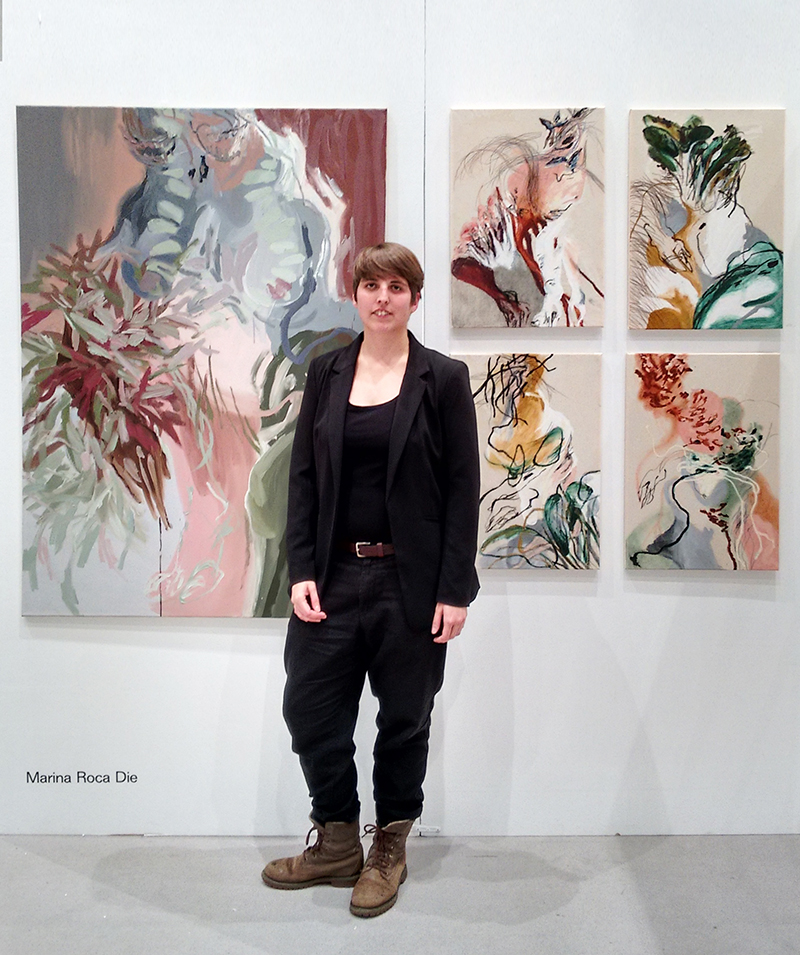
Installation view – Artfair
What is the primary role of an artist? How do you see yourself in the context of challenging public perception via your work and art?
I used to have very clear ideas about the role of an artist. But, as I grow, I am not so sure anymore. I guess it depends on what kind of art you do.
For me, painting and drawing have the role of showing a different and personal perspective of life, plain and simple. This might sound like an easy endeavour, but it is not. I believe that if you are an artist who has clear ideas to explore and the result is coherent with your intentions, you will undoubtedly challenge the public. At the same time, I try to not have an idea of what the public will think while I paint, because painting with that blurred concept in mind can lead you to do what you believe the public wants to see. It can become a prison. You don’t actually know what the public wants to see and they don’t know either.
Sometimes the public challenges you as an artist. I recently did a show where there was a painting I was not particularly interested in showing. In my opinion, it was not so good. But the gallerist insisted that I include it in the show. And she was right. This work turned out to be the favourite. That is something for me to think about. I reached the conclusion that after you paint a canvas, there are as many versions of that painting as people looking at it. Each person invents their own narrative, and when they tell you their interpretation you can be very surprised.
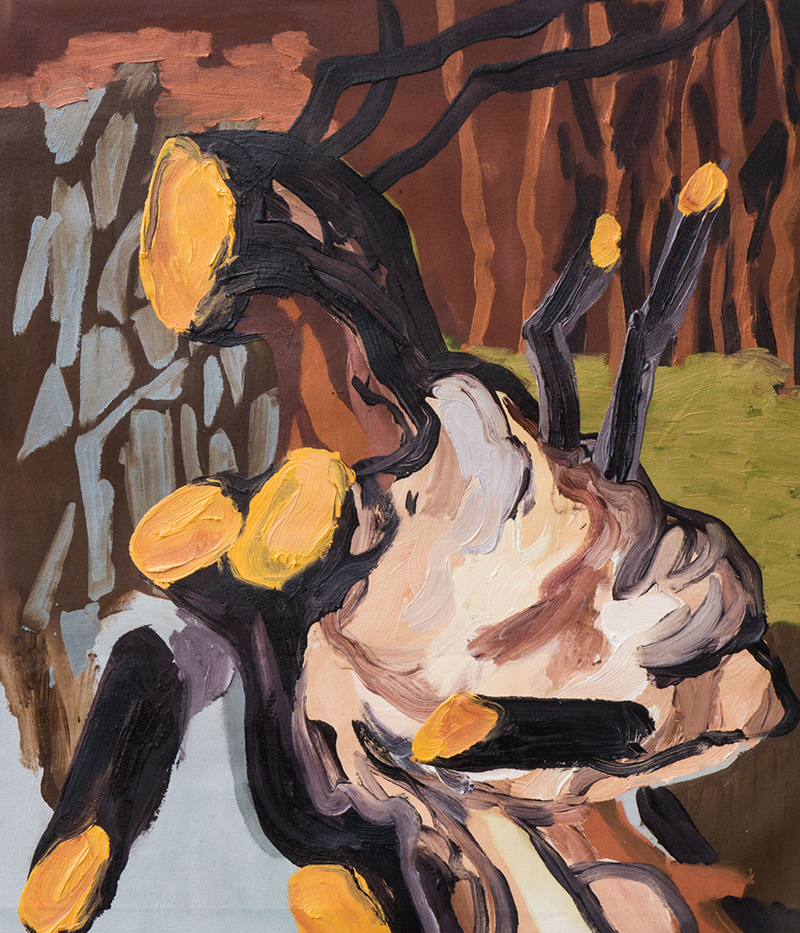
Los Olvidados V (The Forgotten Ones)
How do you balance art and life?
I am an introvert, but not shy. So, I live a quiet and simple life. I have very strong routines that I need in order to focus on painting. I have a regular day job to sustain myself, and I have to say my job inspires me sometimes. I am always looking for new opportunities to show my work and meet new artists and curators to have meaningful conversations with. This might not be simple, since life in a European capital is anonymous. But I also find pleasure in that anonymity. It gives me time and space to be on my own.
How do you deal with the conceptual difficulty and uncertainty of creating work?
I just do the work, as if the subject was entirely new and never explored in painting. Of course, this is never true because almost everything has already been explored. But I find it reassuring to work with that in mind. Sometimes I have a blockage, but not because I don’t know what to paint but because of the opposite – I have so many things to explore that I don’t know which to start with. I just try to make up my mind and go little by little. But I know I will never have the white canvas fear. So, whatever I want to explore, I just go for it.
Art can be grandiose and sublime, but it is also a wonderful thing to do in order to kill time. So, yes, it is uncertain but everything is uncertain in the world! These are just images and there should be no fear in doing them. And yes, sometimes you come up with a shitty painting, but it is not the end of the world. Just trash it and move on.
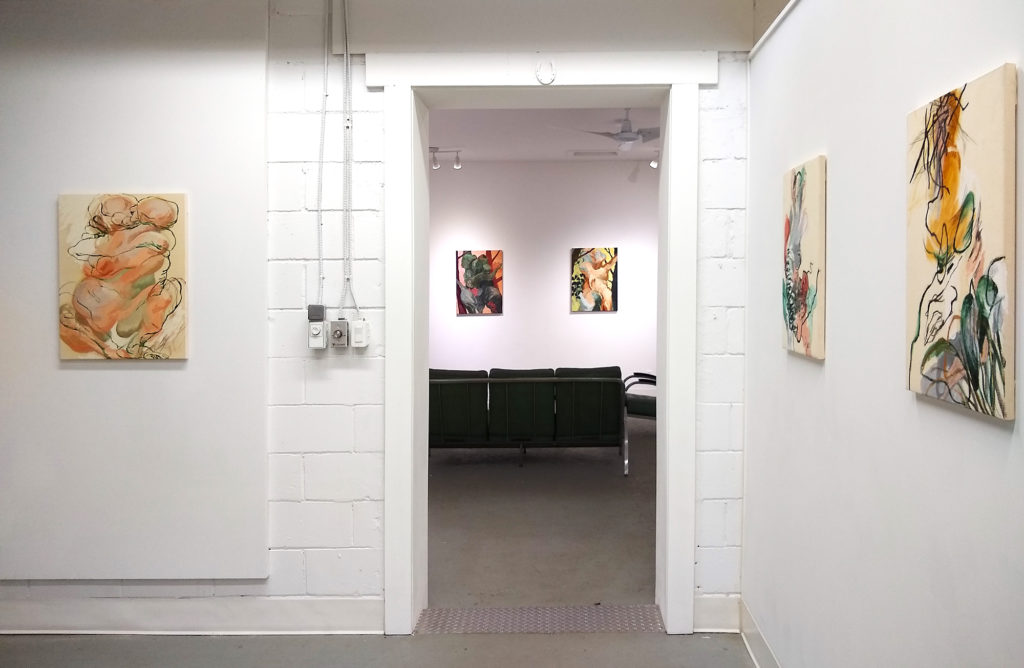
Installation view – Excavo Fine Arts
How does your audience interact and react to your work?
As I said before it depends on the person who is looking. In general, people feel driven by colours and gestures and they enjoy looking at my work. But I have seen a multitude of reactions, from awe to disgust. I always find it interesting though. I love it when people approach me in shows and are honest with what they think about my work. If you don’t like it, I would love to know. Sometimes you learn more from people who hate your art than from people who love it. The viewers who are oblivious of your work are the worst, the kind who don’t feel anything. But if you hate it, your opinion is totally welcome.
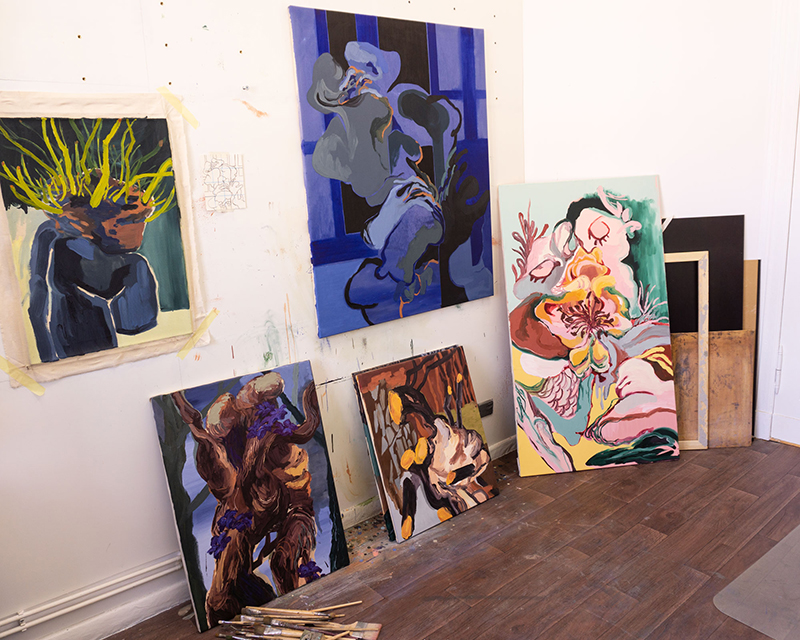
Studio view
What are you looking for when you look at other artists’ work? Who inspires you? Who would you want to know more about?
I am enjoying painting more and more. I used to love installation too and conceptual art. Now, I am particularly driven to painting and drawing. The masters are still moving me. I still look at Picasso, Bacon, Louise Bourgeois and so on. These artists are still alive and teaching us things. At the same time, I don’t think you can separate your experience as a viewer from your experience as a painter. It’s like if you were a magician, once you know the trick, you look at magic from the other side. You cannot go back to your inexperienced eyes.
I love painting and drawing because I love to see how people solve certain problems that I have in my studio. I am very often moved by their solutions. In recent times, I’m finding many women artists impressive. I think in art history we will see this century as the century when women rose up and started to express themselves without the stigma of the feminine. Works from women like Dana Schutz, Kiki Smith, or even younger ones like Elizabeth Glaessner, are memorable artists. Their work inspires me profoundly now, even more than the big masters.
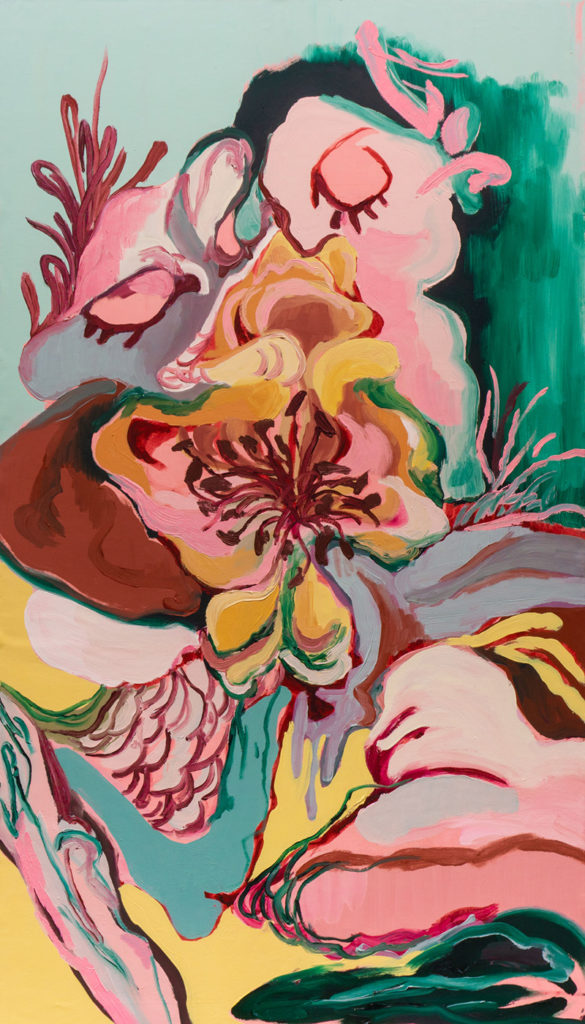
Is this love or summer II
When you spend time with artists in flow what do you observe?
I have observed that every artist is a whole different world. Every artist, as an individual, has to find their own way of expressing, their own subjects, and their own processes.
What would your advice be to an artist who is starting out?
Just try to work without judgement. Do, do and do, and don’t get too attached to what you do at the beginning. Don’t be afraid of throwing away things you don’t consider good. It is really okay to do shitty works for a while. Don’t compare yourself with artists who have been working for longer than you. Don’t get overwhelmed by this time bridge where you know more or less what is good and what is bad. You are just not there yet. Give yourself time. When I say time, I mean a really long time, like ten years. Never give up, especially if you are a woman, because you will need to deal with invisibility for a long time. Only listen to people whose opinions matter, forget the rest.
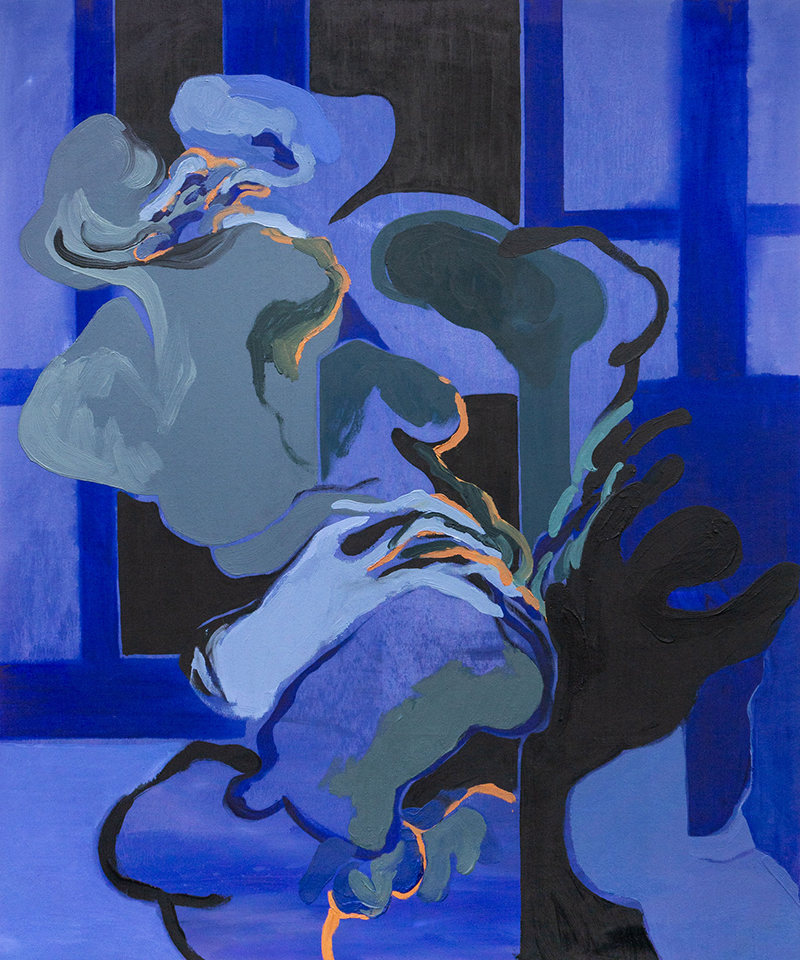
Dusk
How does your interaction with a curator, gallery or client evolve from the initial meet-up? How do you feel about commissions?
Well, I like to have a friendship with the gallerist. If the conversation is fresh and flows freely, then it is the perfect relationship. I also like to propose something myself, like a general idea, or a range of works, but leaving the door open for changes, so that the gallerist or curator can choose too and are part of the process. I think setting up a show should be a dialogue between the artist and the person who is giving you the platform. If the dialogue reaches good conclusions, the show will be good.
I am rarely asked about commissions. I guess it is because my work is pretty personal, so people wouldn’t know what to ask me to do or what to add, apart from my own explorations. I am not against it either. It might be less personal, but commissioned works are also full of dialogue. Having some limitations imposed by an external force can also be interesting to work with.
What are you working on now? Anything new for the next season?
I just came back from a solo show in Canada, in Excavo Fine Arts Gallery, curated by the wonderful Moira McKee. The show was called Not Bodies, and I had super positive feedback. I had such a great experience there. I met wonderful local artists. Now, I need some time to rest, to absorb all these new experiences and to start applying it to my art. So, the next season is definitely going to be painting, painting, painting.

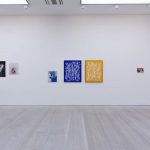
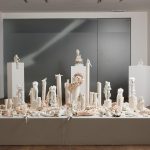
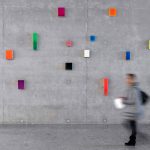
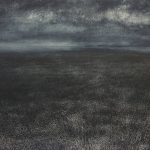
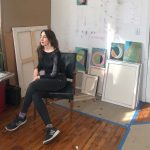
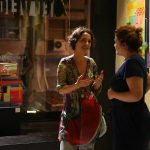

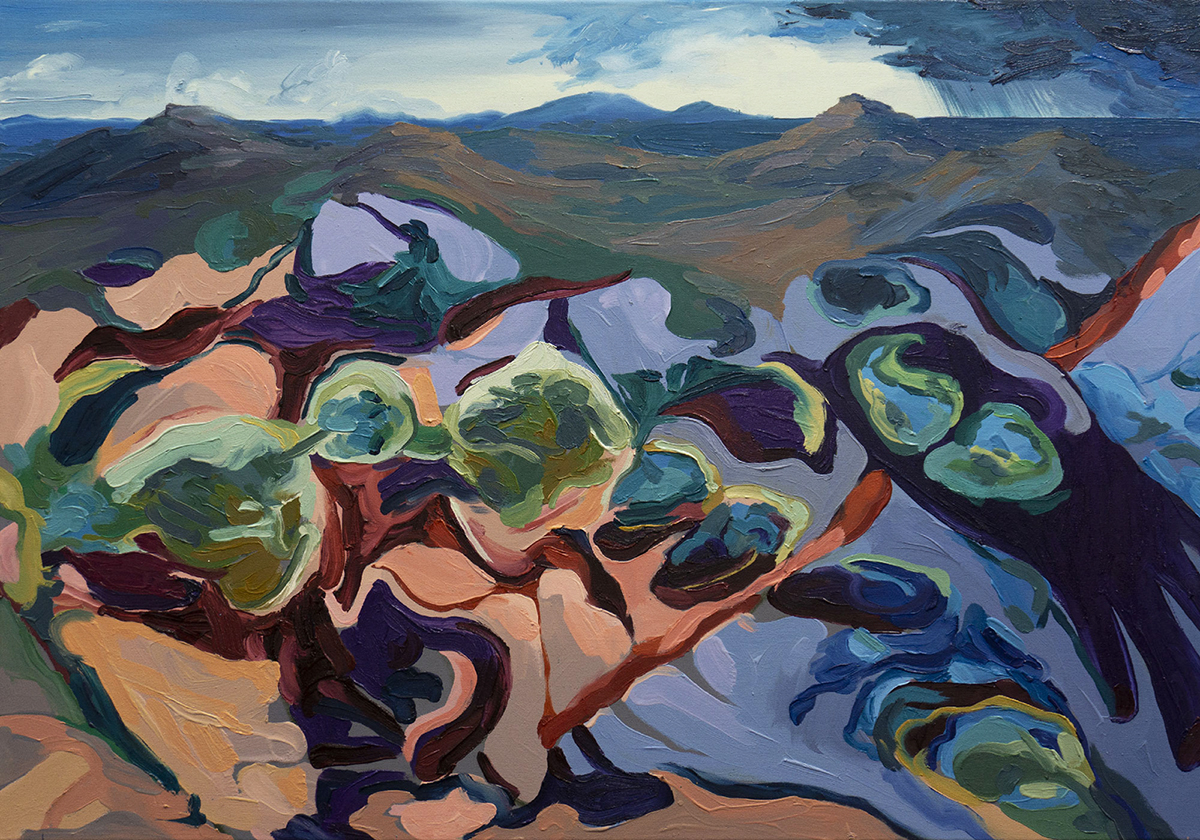
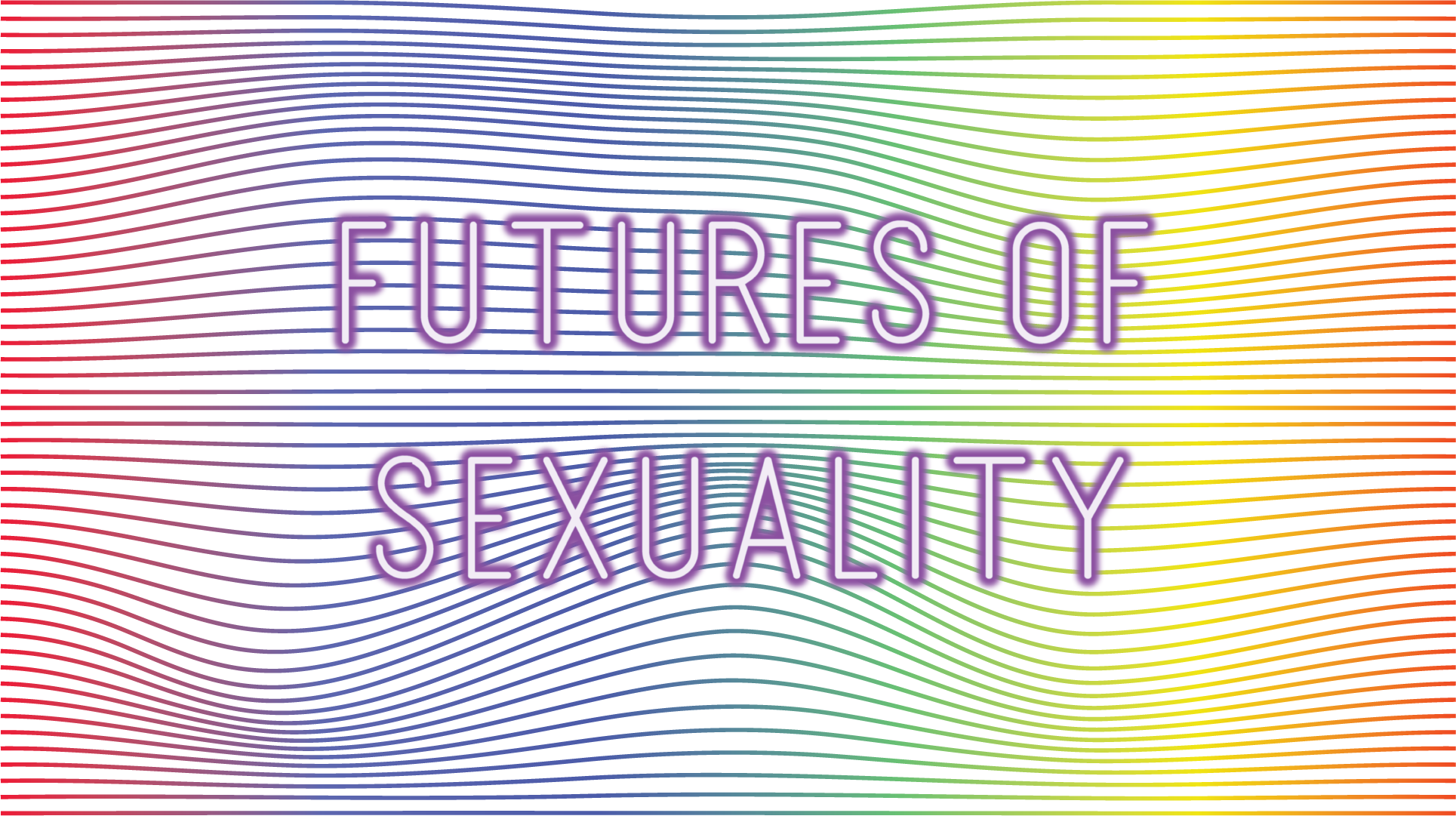
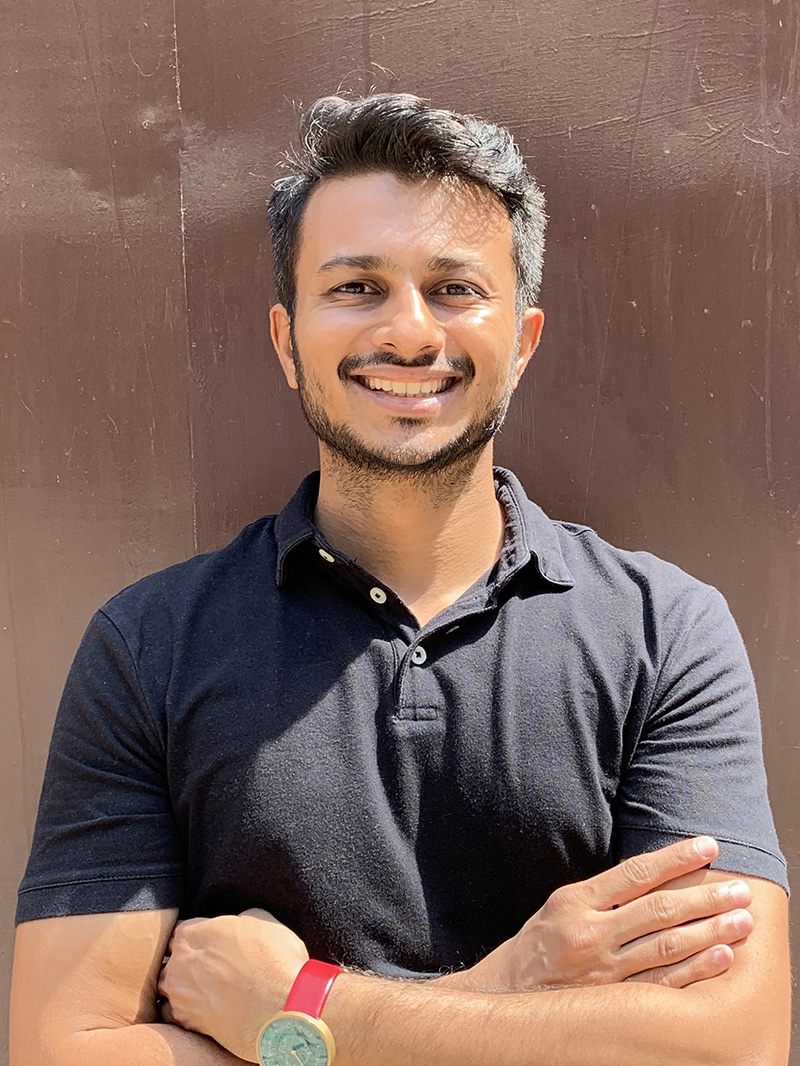
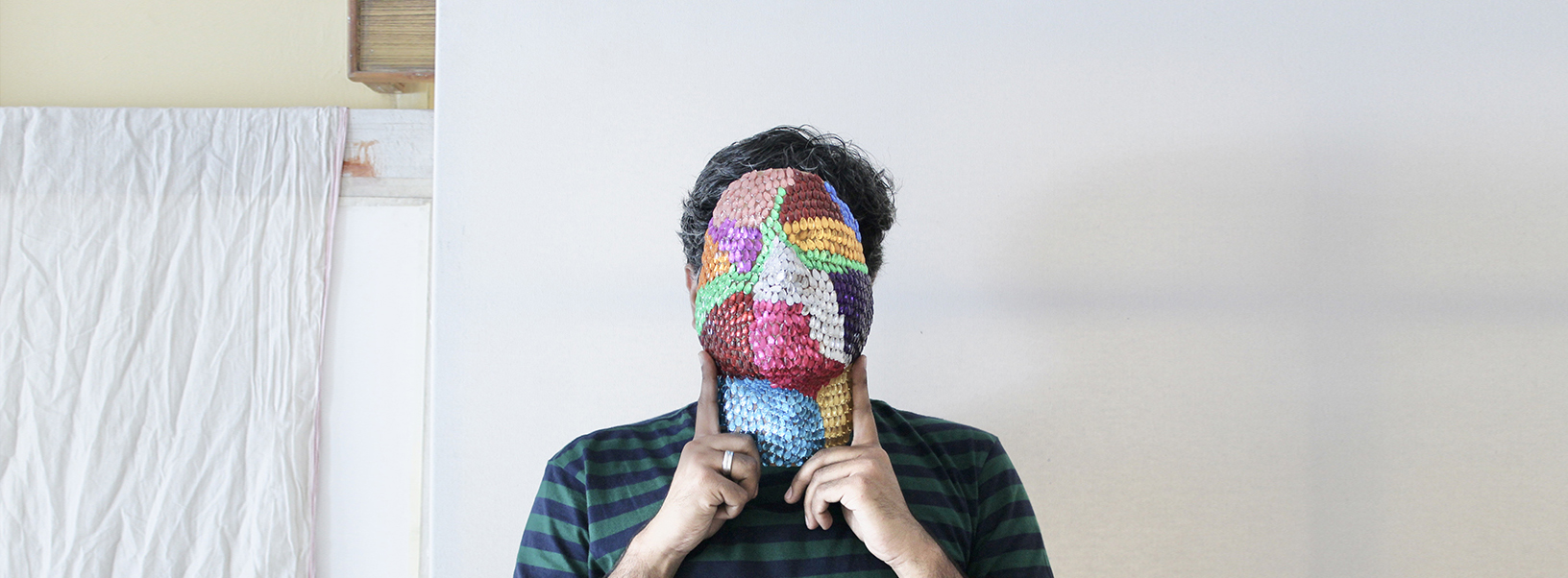
Add Comment